Temperature gradients and boost clock in detail
The cooler is good (and quiet), so that the temperatures from 68 to 69 °C in open construction and 71 to 72 °C in the closed housing can be accepted well, because the ears do not fall off. The clock is still 1755 MHz even in the closed housing and after the final warm-up, which is good, but not world-shattering. But you can still overclock, then it goes with this card up to just over 2 GHz.
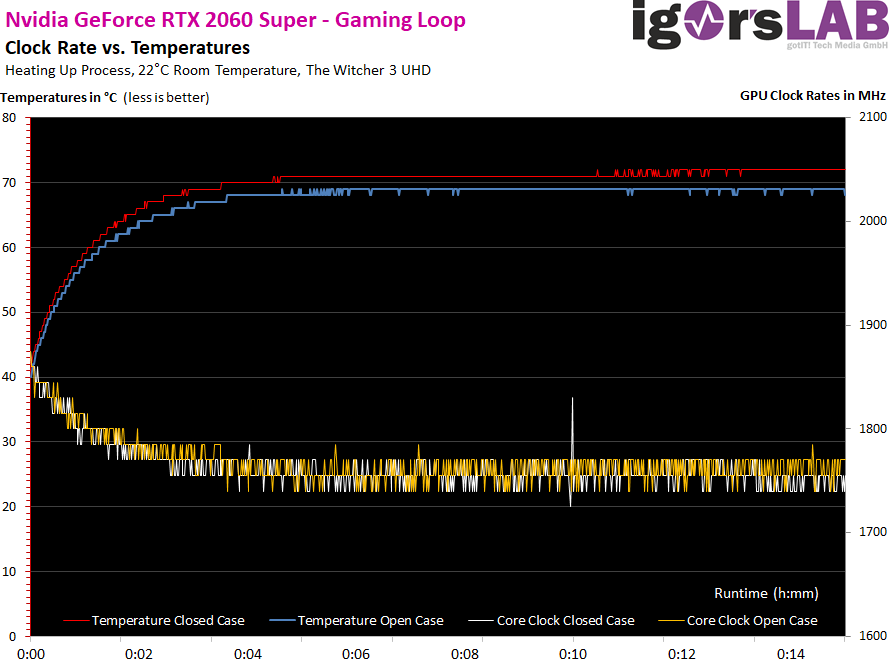
This is no different with the stress test, because the waste heat is largely the same as the power consumption.
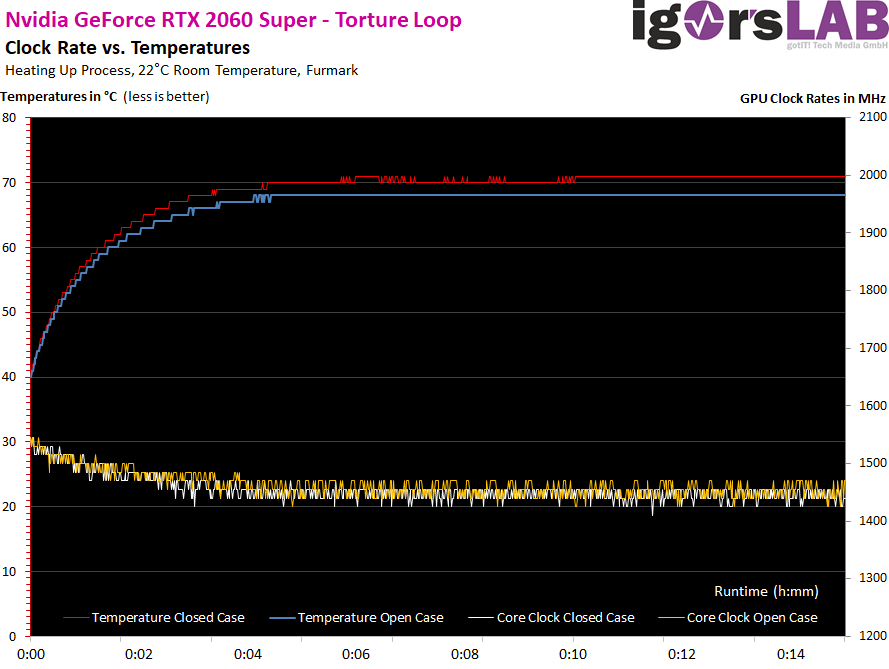
And now the whole thing again in sober numbers in table form, and I compare the map to the larger GeForce RTX 2070 in fairness:
| Initial RTX 2060 Super |
Final value RTX 2060 Super |
Final value RTX 2070 FE |
|
|---|---|---|---|
| Open Benchtable | |||
| GPU Temperatures |
34 °C | 68 to 69 °C |
76 °C |
| GPU clock | 1875 MHz | 1755 MHz |
1665 MHz |
| Ambient temperature | 22 °C | 22 °C | 22 °C |
| Closed Case | |||
| GPU Temperatures |
33 °C | 71-72 °C |
71 to 72 °C |
| GPU clock | 1875 MHz | 1725 to 1755 MHz |
1635 MHz |
| Air temperature in the housing | 25 °C | 41 °C | 42 °C |
Board Analysis: Infrared Images
The following image gallery shows all infrared images for the gaming and the torture loop in the open structure and in the closed case. The differences are visible, but the cooler is absolutely confident in spite of everything, because it is not so much hotter in the end. What is really striking, however, is that there are no real hotspots, but the area is quite uniformly heated. This testifies to the already mentioned pavement with thermal pads and the connection of large areas to the radiator.
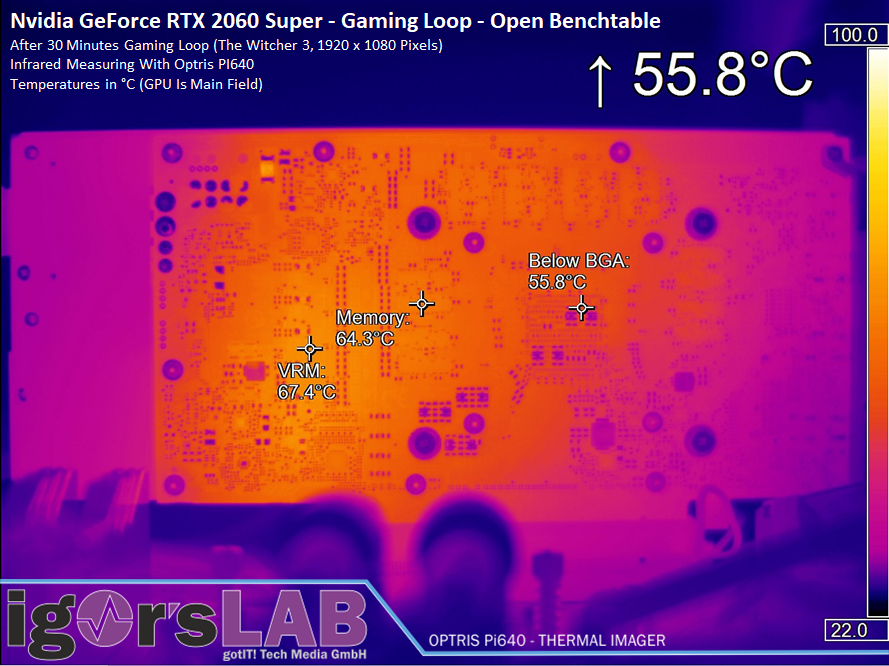
Temperatures rise by up to 3 degrees, but the fan doesn't turn faster.
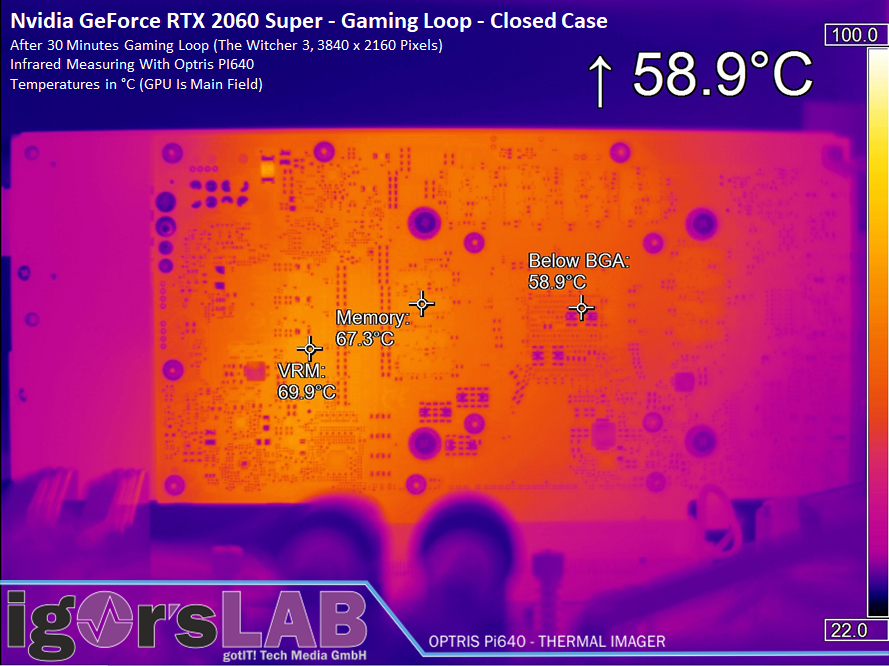
The stress test shows the same picture, even if the values in the open structure are now just below the gaming values of the closed housing.
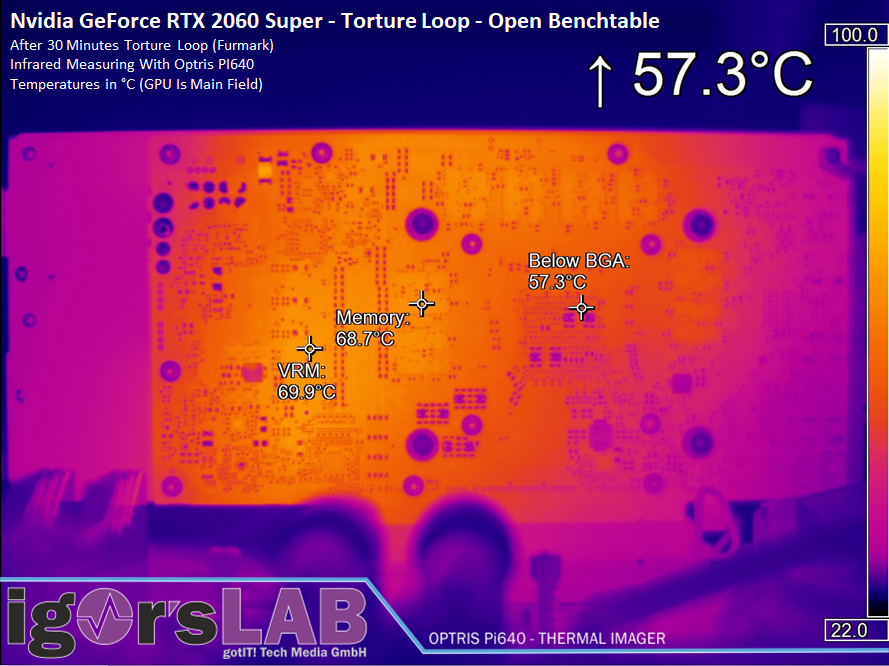
Here, in the closed structure, another 2 to 3 degrees are added. Nothing to really think about.
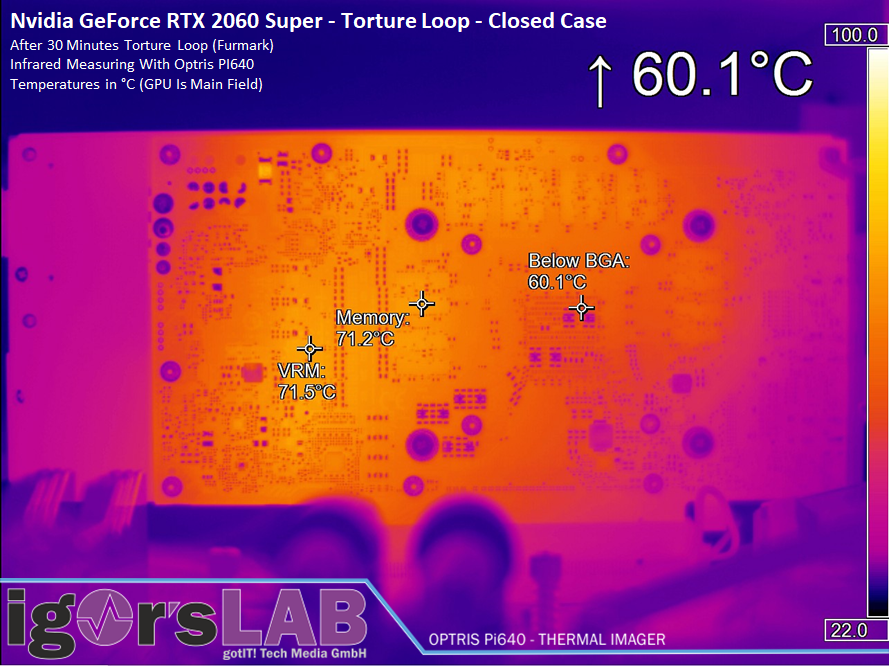
- 1 - Einführung und Übersicht
- 2 - Tear Down: Platine und Kühler
- 3 - The Division 2
- 4 - F1 2019
- 5 - Far Cry 5
- 6 - GTA V
- 7 - Metro Exodus
- 8 - Shadow of the Tomb Raider
- 9 - Total War: Three Kingdoms
- 10 - World War Z
- 11 - Leistungsaufnahme im Detail
- 12 - Temperatur, Takt, Infrarot
- 13 - Lüfter und Lautstärke
- 14 - Zusammenfassung


































Kommentieren